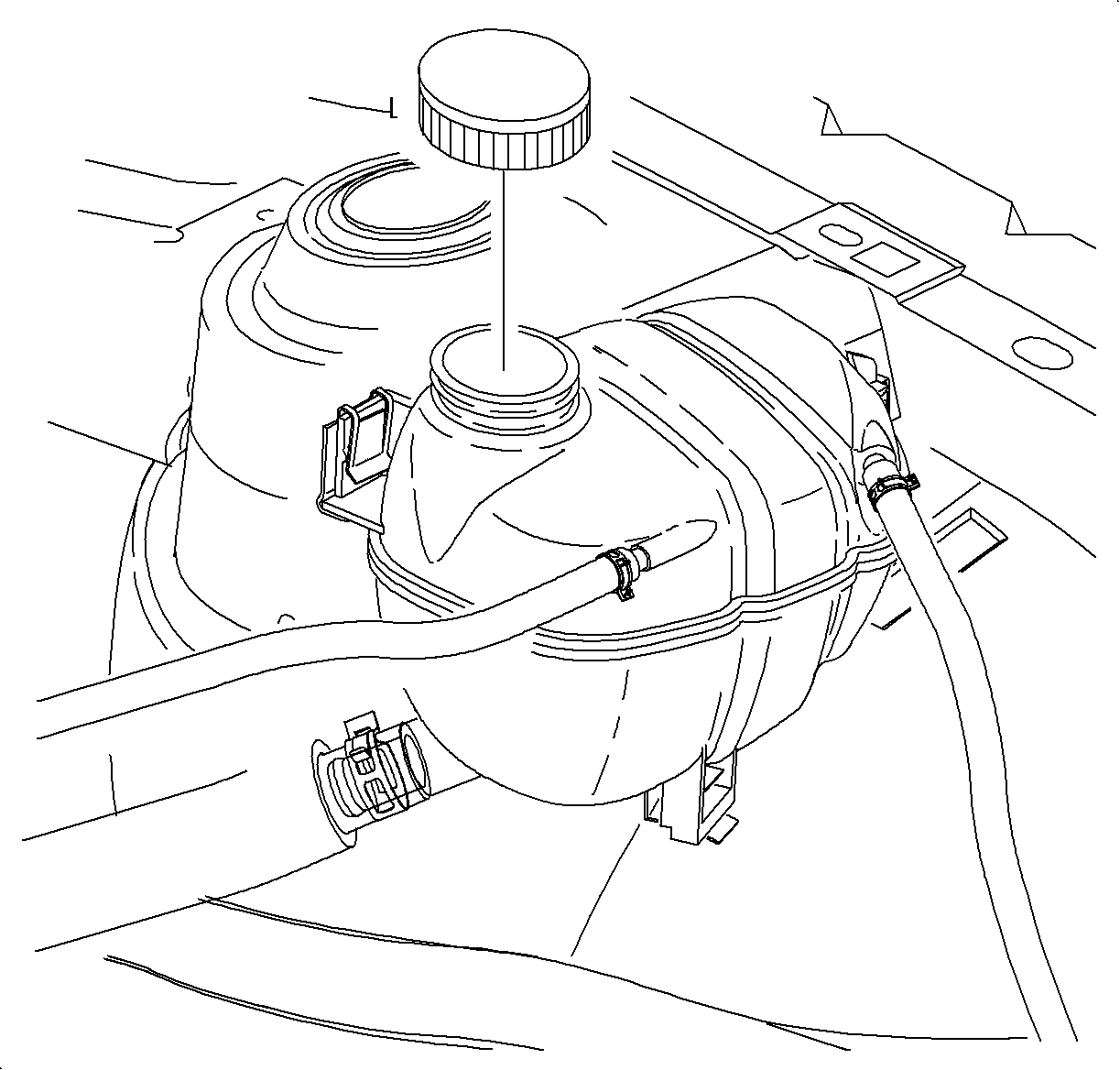For 1990-2009 cars only
Cooling System Leak Testing L81
Coolant Replacement
- Slowly add a mixture of 50/50 DEX-COOL® antifreeze and clean water to the coolant surge tank until the level reaches the Cold line (surge tank seam).
- Start the engine and check for leaks.
- Run the engine until the thermostat has opened.
- Install the coolant surge tank coolant cap.

Important: The vehicle must be level when filling the cooling system.
Specification
The cooling system volume, including the heater core, is 7.4 L (7.8 qt).
| 3.1. | Use a scan tool to verify the ECT is between 87-90°C (188-196°F). |
| 3.2. | Cycle the RPM from idle to 3000 in 30 seconds intervals to aid in bleeding off the cooling system. |
| 3.3. | Add coolant as necessary to bring the level up to the coolant surge tank Cold line (surge tank seam). |
Cooling System Leak Testing L61
- Slowly add a mixture of 50/50 DEX-COOL® antifreeze and clean water to the coolant surge tank until the level reaches the Cold line (surge tank seam).
- Start the engine and check for leaks.
- Run the engine until the thermostat has opened. Use the scan tool to verify the engine coolant temperature (ECT) is 90°C (194°F).
- Add coolant as necessary to bring the level up to the coolant surge tank Cold line (surge tank seam).
- Install the coolant surge tank coolant cap.
Important: The vehicle must be level when filling the cooling system.
Specifications
| • | The cooling system volume, including the heater core, on an L61 with an automatic transaxle, is 6.9 L (7.3 qt). |
| • | The cooling system volume, including the heater core, on an L61 with a manual transaxle, is 7 L (7.4 qt). |

